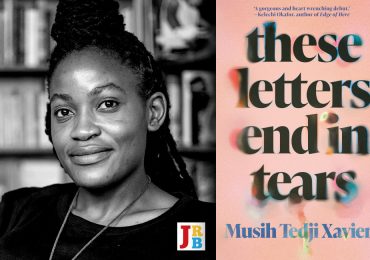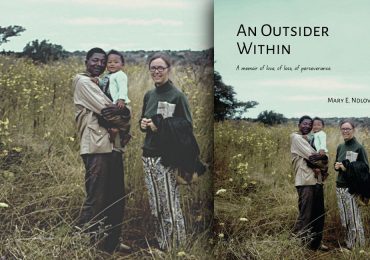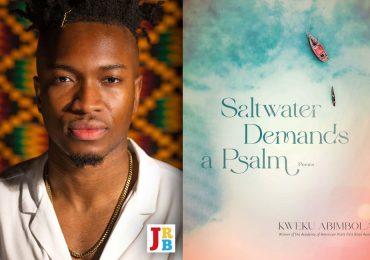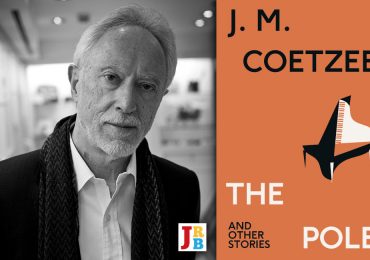Michaela Coel’s Misfits blends an effervescent sense of social realism with a beguiling clarity, writes Wamuwi Mbao.
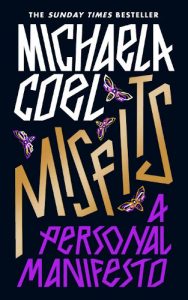
Misfits: A Personal Manifesto
Michaela Coel
Ebury Press, 2021
The vast ugly machinery of celebrity conspires with regularity to anoint a new set of celebrities who, we are told, are the faces of intelligent feelings. This anointing takes advantage of the common faith, a faith without proof, that everything exceptional can be taught or made relatable. These elevated subjects of idolatry can be found in every genre—the Phoebes (Waller-Bridge or Bridgers, take your pick), the Zadies and Sallys (main acts and many pale imitators)—and they all have as their unifying characteristic a giddying youthful cleverness and a zesty magazine-friendly aesthetic that expresses itself in witty don’t-you-wish-they-were-your-friend banter. They have a tendency to pop up in saccharine TED Talks, po-faced consultancies, and the guest-staff lists of neophiliac colleges and universities.
Our abiding fascination with these gilded people—who are often, gallingly, to be heard referring to themselves as ‘creatives’, a debased designation—may be seen in publishers’ willingness to scrape together every paltry utterance that spills from them . Harvested tweets, transcribed TikToks, collected Instagram natterings: there is nothing that cannot be rendered for consumption. I was ready to consign Michaela Coel’s new tome Misfits: a Personal Manifesto to the same pile, but for one reason: turns out, it is startlingly good. Woven from her 2018 Edinburgh International Television Festival MacTaggart Lecture (a series that for the forty-odd years before Coel’s lecture was given over to mansplaining panjandrums and corporation devotees), Misfits is a punchy refutation of the cultural prescription that only certain kinds of people (white, middle-class) will ever belong, and that the rest of us are there by the good graces of the establishment.
Coel is a public figure who came to notice with her sour-sweet indie comedy series Chewing Gum. That show, with its depiction of Black British life on a dour estate, is a television high-point. What Coel is now more readily known for is her incendiary and award-garnering BBC drama I May Destroy You, a recasting of the events surrounding Coel’s sexual assault while she was working on the second series of Chewing Gum. This book is partly about those events, but it is also an origin story, a way of locating Coel and her preoccupations (work, the creative spirit, moths). She describes growing up in the overlooked housing estates of London’s city centre. The place she is native to, built in the late seventies when the naive utopianism of the urban planners who held sway in the post-war years had already been cynically kneecapped by the underfunding of successive governments:
At most, we, being my mother, sister and I, were one of four Black families there. Not something I thought anyone gave a damn about, until someone left a pile of shit on our doorstep. My mum silently cleaned it up. But when we received a bag of shit through our letterbox, as a precocious busybody I felt I had no choice but to take things into my seven-year-old hands. I walked around the estate, swung on the swings, desperate for transparency, wondering, Who? … Who are the enemies of my family?
That England is a culturally stunted country has been testified to countless times by those Black writers who have sought to push past the constraints of a society unable to accustom itself to the idea that the future has happened already. ER Braithwaite, Buchi Emecheta, Andrea Levy, Stuart Hall and many others have written against the tiresome reductions of that country for so long that the usual appended publisher-praise (‘this timely, necessary book …’) seems to have belatedly stumbled upon an ongoing conversation. Coel’s safeguard against the ever-present racism and school-sanctioned bigotry was her posse: ‘the abundance of Black girls, White girls, mixed girls, misfits; my friends were all misfits: a huge gang of commercially unattractive, beautiful misfits, who found the mainstream world unattractive.’
Coel and her untelegenic friends, ironically, would be prime material for a ribald Derry Girls-style streaming show now. But she describes how this cohort of girls formed a kind of vital survival strategy. Coel does not use nostalgia as a way to provide distance from her youthful self: she lingers on her teenagehood as a way of providing a continuum, and the story that forms as she does so is indeed one of having to creatively improvise strategies for attitudinal resilience, to break away from restrictive trajectories: ‘why was there no clear sign of safety at the end of the ladder?’ she muses as she diverts from one expected path. That resilience served her well when, having navigated drama school by doing her own thing, she found herself being courted by a production company who wanted to turn her theatrical show Chewing Gum Dreams into a TV show. Coel quickly learned that being a writer for a TV show—even one’s own—meant having to negotiate being defined from the offset as an outsider:
In the quest for new writers the misfit-looking people are instinctively sought after first. But instead of nurturing them to write for themselves, the last few years have seen an immediate coupling with writers before the process has begun. Writers more experienced, who fit into this house more.
Those of us—and there are many—who have experienced this kind of shackling when we began working among white people, who have been told, ‘that’s the way it is’ (not just a Bruce Hornsby song, but also a common refrain Coel returns to often in this book), know how that condescension stays in the bones. Coel’s words in this manifesto have a depth of truth that goes rather deeper than the glad-handing dedication to ‘anyone’ might imply. We are aware of the necessary affectation that defining oneself as a misfit becomes. For Coel, her independence became a deeply necessary part of her creativity. ‘Is it important,’ she asks, ‘that voices used to interruption get the experience of writing something without interference at least once?’
The lecture that forms the main part of Misfits is an agile and provocative testimony. It is populated by an effervescent sense of social realism (what we might have called ‘woke’ before that term became muddied) that mingles with a beguiling clarity. Coel writes with a voice of bright authority, limning the experience of being a misfit with delicacy and nuance. The lecture sits alongside two short bookends. The introduction is a loose-limbed dream sequence that relates Coel’s strange bout of anosmia and contemplates the idea of the moth, a theme that will tendril into the lecture in interesting ways. The afterword, written three years after the lecture, brings everything in for a landing with the predictable return of the moth metaphor as a way of thinking towards a new consciousness outside the limitations of the outsider/insider paradigm.
The end note is an ambivalent one, which is suitably cautious given the fate that often befalls moths. What I think is laudable, in this shining manifesto, is its author’s ability to find something relatable in the ineffable texture of her experiences, and to bring that across to the reader. It’s a short read, but one that will stay with you.
- Editorial Advisory Panel member Wamuwi Mbao is an essayist, cultural critic and academic at Stellenbosch University. Follow him on Twitter.

